Yamanaka Group
Turnouts
Manufacturing Technology
High Quality Products and Services Supported by an Integrated Production System That Boasts the Latest Technologies
Our integrated production system covers all processes from design to after-sales service.
It is the backbone of our superior quality and highly reliable products. We are also focusing on next-generation turnouts, and actively training young personnel to support us in moving forward.
Development & Design
-
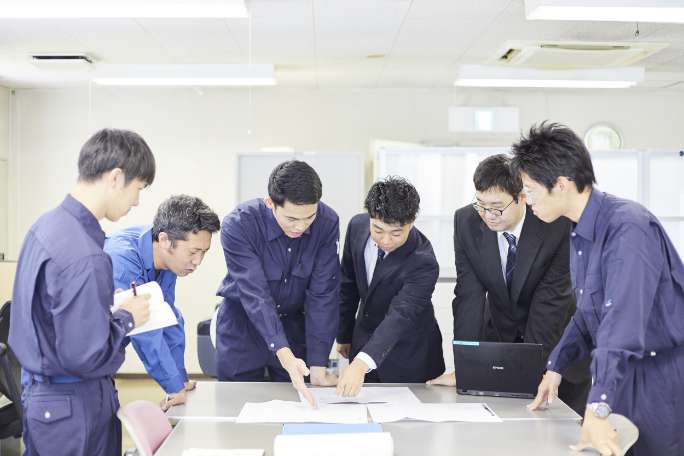
Development & Design of Turnouts
We focus on the on-site needs of railways, and propose a variety of ideas for development and improvement. Various turnout configurations are required to suit the sites where they will be laid. In some cases, we carry out an in-depth on-site survey and take measurements, and use those specifications to design customized turnouts using CAD and other technologies.
-
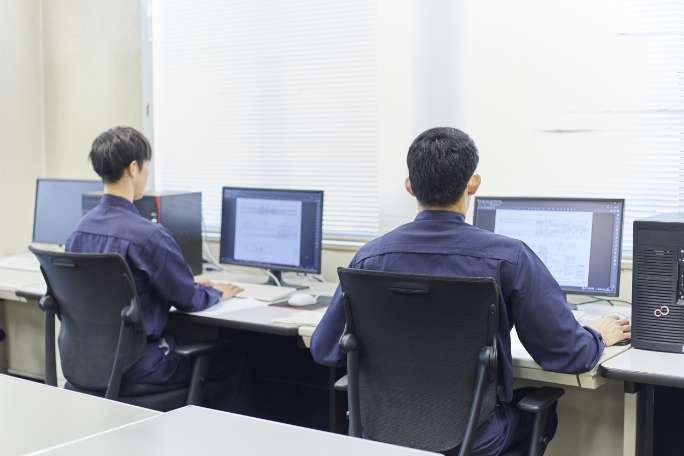
Development of Manufacturing Machinery Programs, and Jigs and Blades
The rails that make up turnouts are manufactured using a combination of various cutting and shaving processes. The processing of these rails is done by computer-controlled machines. That is why all of these processes, from designing the shapes of blades used in processing to developing the programs for controlling machines, need to be done in-house using our expertise in processing while also taking into account the properties of rail materials.
-
Processing of Rails
-
Forging
Forging connects general rails with S-rails, which come in a variety of cross-sectional shapes. The edges of the S-rail are heated in a furnace at temperatures of close to 1000℃, and then pressed into metal molds using a hydraulic bender and processed into the cross-sectional shape of a general rail. This is not a computer-controlled process; it requires experience and skill.
-
Rough Shaving
The tongue rail has a tip that is processed into a blade shape. So to make sure the quenching effects are not lost even after shaving, the rail is roughly shaved before it is hardened using fire.
-
Quenching
The pointed ends of tongue rails, which are used in turnouts, are processed into a blade shape that can be easily abrased. So the head section of the rail is hardened using fire to improve its abrasion resistance.
-
Finishing
Once any distortions have been removed from the hardened rail, shaving and boring work is done with a high level of precision and detail. This processing work is done using an MC, planer, saber, milling cutter and other tools. In some cases, the processing may take up to a dozen steps.
-
Adjusting
Shaving a rail creates distortions in its surface. So in the final process, these distortions are removed from the rail surface using a correction machine, while the required bends are made in it.
-
-
Processing of Parts
-
Cutting and Correcting
Cutting work and the parts used in turnouts also require a high level of precision, and any distortions in the raw materials or due to welding can also not be overlooked. Benders are used during key stages in the manufacturing of parts to remove any distortions.
-
Machining
A variety of parts are used in a turnout to fasten the rails in place. Parts that need to be used in large quantities are either made using molds or by forging. Parts produced in high-mix and low-volume lots are processed from cut off pieces of steel sheets and thick steel plates using an MC, milling cutter, saber, drilling machine and other tools.
-
Welding
Machined parts are further shaped by welding. This includes the base plates that support and fasten the rails. Often times same-shaped base plates will have different dimensions, which makes it difficult to automate the welding process.
-
Correcting
The parts used in turnouts also require a high level of precision, and any distortions in the raw materials or due to welding can also not be overlooked. Benders are used during key stages in the manufacturing of parts to remove any distortions.
-
Finishing
Once any distortions have been removed, shaving and boring work is done with a high level of precision and detail. This processing work is done using an MC, planer, saber, milling cutter and other tools. In some cases, the processing may take up to a dozen steps.
-
Assembly, Inspection and Shipment
-
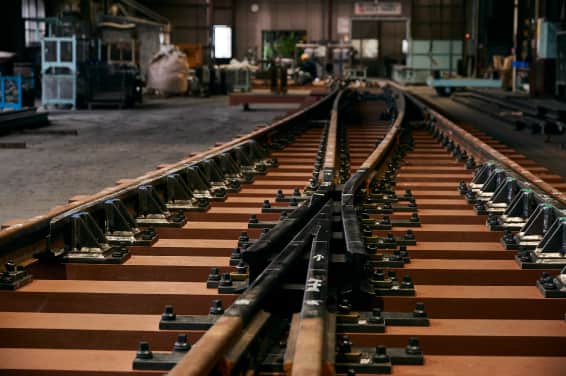
Assembly
Any entire turnout that is ordered is fully assembled at our factory, or it is temporarily assembled so we can check the composition and functions of the materials used, and carry out a completed product inspection. Sometimes the inspection is done with the customer present. Once we have assembled and inspected the turnout, each part is marked and then the turnout is taken apart; individual parts are packed and then shipped to the customer. We mark each part to make it easier for the customer to assemble the turnout while laying the tracks.
-
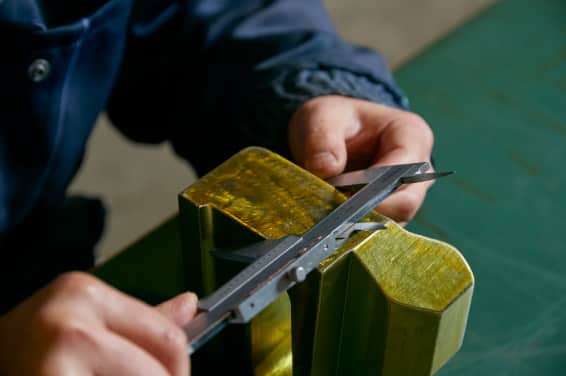
Inspection
We have built a quality management system that conforms to ISO9001:2015. Our inspection system guarantees the quality of the rails used in turnouts and all other parts.
-
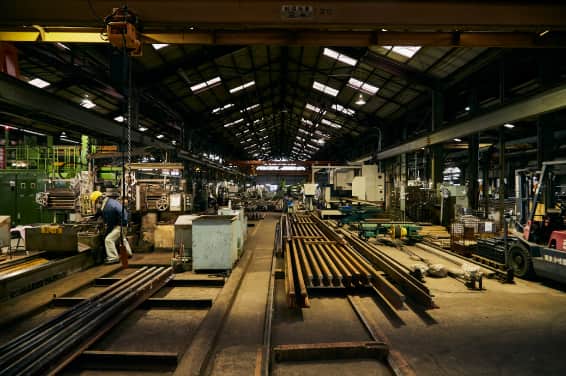
Shipment
The finished turnout parts are shipped (by truck) to the track maintenance bases and yards of railway companies nationwide. The rails used in turnouts are finished to a high level of precision, so they need to be packaged and transported extremely carefully to avoid any scratches or distortions occurring during delivery.
After-Sales Service
-
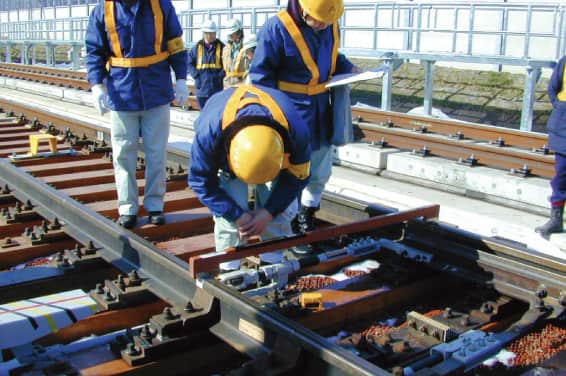
Environmental Survey and Adjustments
Turnouts are endlessly subjected to harsh conditions, such as the speed and weight of trains that run over them, In addition, the turnout at any given point must be controlled by the signal system and move as required. So it is essential that our customers’ track maintenance departments carry out maintenance and make adjustments to the turnouts as needed. Through our after-sales service, we can also assist customers as required to carry out this maintenance and adjustment work.

